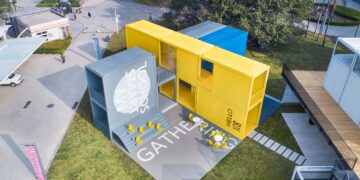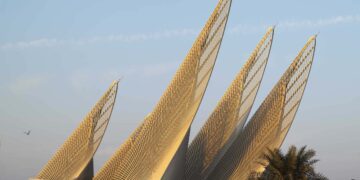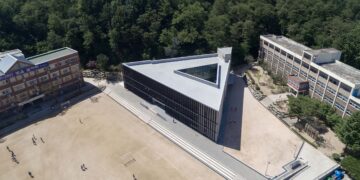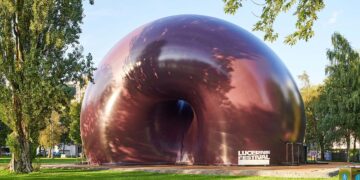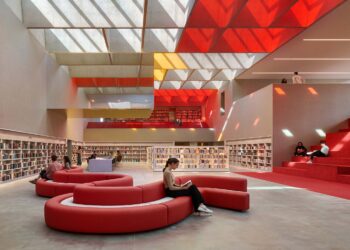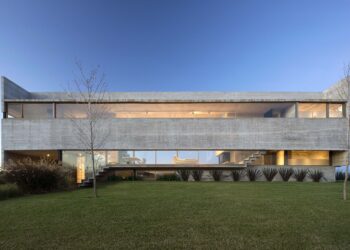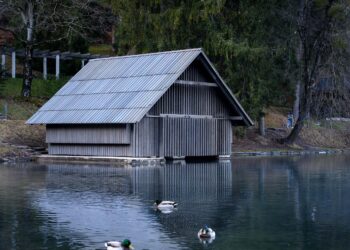A family home honoring the client’s commitment to environmental sustainability
환경 보호에 힘써온 환경 과학자 부부의 지속가능한 주택
Faulkner Architects | 폴크너 아키텍츠


The clients are a couple of environmental scientists who, along with their two sons, relocated from the Oakland Hills to the summer climate of Orinda, California. Their commitment to sustainability, including a request for net-zero energy performance, was evident throughout the design process. A three-bedroom program began as a remodel of a 1954 ranch house at the foot of a hill next to a seasonal creek. After finding the existing structure and soils to be unsuitable, it was decided to build on the existing footprint under the shade of a Valley Oak that had grown up close to the original house. The surviving portion of the original house is the fireplace, which was wrapped in concrete and utilized for structural support. This made additional grading unnecessary and allowed the new house to maintain the same intimate relation to the oak tree.
환경 과학자 부부와 두 아들이 따뜻한 여름 기후인 캘리포니아 오린다 지역으로 이주하면서 새 집의 설계를 의뢰했다. 지속가능성에 큰 관심을 지닌 과학자 부부는 탄소중립형 실천과 더불어 시공의 전 과정이 환경친화적이길 원했다. 개울 옆 언덕 기슭에 자리한 부지에는 1954년에 세워진 목장 주택이 있었다. 원래 이 주택을 개조해 쓸 계획이었지만, 조사 결과 현 토양에 기존 구조가 맞지 않는다는 소견이 나왔고, 결국 옛 건물 옆, 참나무가 드리운 그늘 아래 새 집을 짓기로 했다. 옛 건물은 철거했으나, 난롯가 구조만은 남겨 콘크리트로 감싼 후 지지대로 활용했다.




Entry to the 345m² house is from the north, where a steel plate covered walkway leads to the front door. Inside, 6m floor-to-ceiling, high-performance glazing builds continuity with the landscape while a 3.6m retractable glass wall opens onto a patio and adjoining garden. The family desired an open living layout that connected directly to the landscape. A mezzanine plan evolved with a double height family space nested with a master bedroom and study stacked above the kitchen and nook. A screened deck shades the upper level from afternoon summer sun. Downstairs, secondary bedrooms along an extendable hallway, wrap an outdoor dining area situated between the kitchen and family room.
Construction materials and methods were considered in balance between first and lifecycle costs. The corten steel rain screen for the exterior skin and interior wood were chosen to take advantage of zero annual maintenance cost and a shotcrete foundation allowed formwork to be repurposed for wood framing.




집은 총 2층, 345m2 규모다. 코르텐 스틸 소재의 캐노피가 북쪽으로 길게 뻗어 현관문까지 이어진다. 내부로 들어가면 오른편에 6m 높이의 더블 하이트 구조의 거실이 있고, 왼쪽으로는 2층으로 이어지는 계단이 있다. 거실을 감싸고 있는 유리 통창 너머로 주변을 둘러싼 나무들의 모습이 눈에 들어온다. 바깥 풍경과 곧바로 연결된 공간을 원했던 의뢰인의 요청을 따라 파티오에서 정원으로 이어지는 3.6m 높이의 개폐식 유리 벽을 세웠다. 부엌을 지나 남쪽으로 복도를 따라가면 두 아들을 위한 2개의 침실과 작은 거실이 있다.
계단을 올라가면, 부부의 침실과 서재가 나온다. 2층 복도를 따라 북쪽으로 열린 지붕 덮인 데크는 여름날 오후에 비치는 뜨거운 태양을 피해 시원한 그늘을 제공한다.


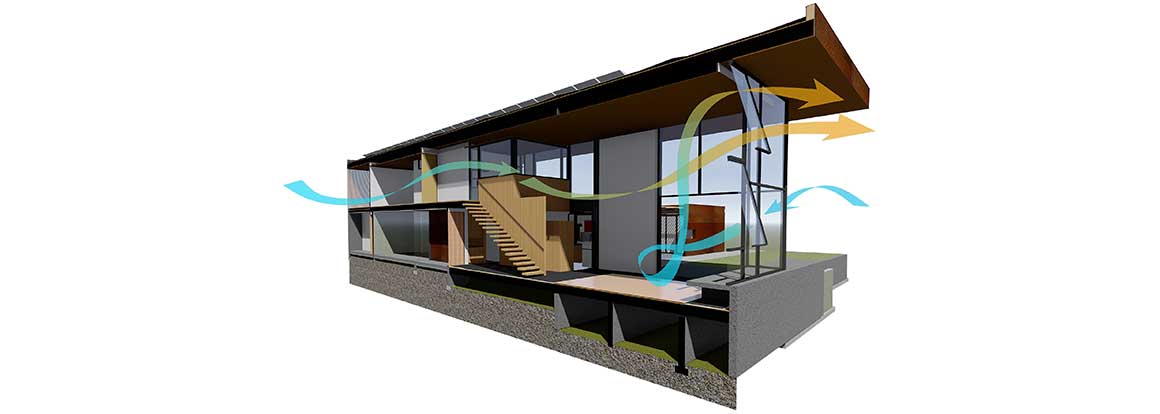

Single use material selections such as the corten steel and shotcrete foundation reduced complexity in detailing and labor costs allowing a larger portion of the budget to be reallocated for upgraded mechanical, insulation, and glazing systems. The same attitude for interior finishes produced acoustically detailed, unfinished oak ceilings and walls. The smell of the oak and feel of it under foot builds a multisensory connection to the immediate landscape outside. The sum total of the limited and landscape-driven materials presents a relaxed and quiet built environment that allows the senses to focus on the natural environment, creating a haptic connection to the rhythms of the planet.
A corten rain screen provides a no-maintenance skin. High levels of insulation and glazing efficiency reduce heating and cooling loads. An 8.1kW photovoltaic system provides on-site renewable energy and produced more electrical energy than the house used the first year. Rainwater is collected via a waterfall from the roof at the end of the hallway. Buried tanks store water for use in toilets and laundry. Greywater is collected separately and reused for irrigation. Electronically commutated motors and variable speed heat pumps are used to further limit energy use and control heating and cooling. An energy recovery ventilator is used to provide fresh air.



코르텐 스틸의 거친 질감과 달리, 내부는 창을 투과한 햇살이 부드러운 화이트 톤 가구와 정돈된 목재에 닿으며 따뜻함을 자아낸다. 실내에 은은하게 퍼지는 참나무 특유의 향이 바깥 풍경과 어우러져 감각을 일깨운다. 창밖의 불규칙하게 뻗은 참나무의 가지들을 바라보면 마치 시시각각 변화하는 자연을 담은 액자를 보고 있는 듯하다. 2층 천장과 벽 곳곳에는 마감을 하지 않은 참나무를 써서 1층과는 상반된 날 것의 분위기가 연출된다.
공사 방식과 재료는 공사비와 유지 비용 간의 균형을 고려했다. 외부에는 방수 기능이 있는 코르텐 스틸을, 내부에는 목재를 사용하였고, 기초 작업은 숏크리트 공법을 써서 거푸집이 목재 골조로 쓰일 수 있도록 했다. 이처럼 공정이 단순한 코르텐 스틸과 숏크리트를 활용하여 세부 작업비와 인건비를 절약한 비용으로 기계 및 단열, 고성능 창문 등 에너지 효율을 고려한 설비를 갖췄다.
코르텐 스틸은 건물의 단열 및 채광 효율도 뛰어나서 냉난방 부담을 줄여주고, 추후 관리가 필요 없어 연간 유지비 또한 들지 않는다. 8.1kw 규격의 태양열 집열 장치가 즉석에서 재생 가능 에너지를 제공하는 한편, 한 가정이 1년 간 사용하는 전기량을 능가하는 전기를 생산한다. 복도 끝 지붕에는 빗물 집수 장치가 설치되어 있고, 땅속 탱크에 모인 이 빗물을 화장실 및 세탁용수로 사용한다. 중수는 따로 모아 식물에 급수한다. 난방과 냉방에 부가적으로 쓰이는 에너지를 제한하기 위해 전기식 정류 모터와 변속 히트펌프를 설치하였고, 공기 정화기는 실내에 언제나 신선한 공기를 공급한다.


Project: Miner Road House / Location: Orinda, California, USA / Architect: Faulkner Architects / Project team: Greg Faulkner, Christian Carpenter, Jenna Shropshire, Owen Wright, Darrell Linscott, Richard Szitar, Pete Austin, Ben Lueck, Glenn Lutz / Interior design: Faulkner Architects with DZINE Concept / Civil Engineering: Lea & Braze Engineering / Structural Engineering: CFBR Structural Group / Mechanical, Plumbing and Electrical Engineering: Davis Energy Group / Landscape Architect: Thuilot Associates / Acoustics: Bob Hodas Acoustic Analysis / 3D Model: Garrett Faulkner / Contractor: Ethan Allen Construction / Site area: 31,849m2 / Gross floor area: 346m2 / Materials: facades_Aluminium(CW 50), sliding doors_Aluminium(CP 130) / Completion: 2015 / Photograph: Joe Fletcher Photography, Drone Promotions(aerial)






